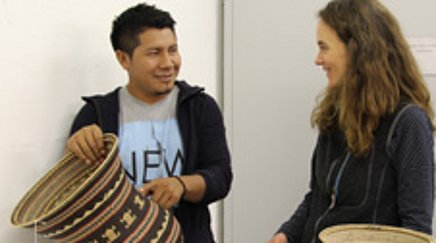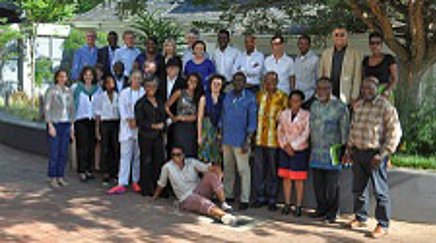Bauhaus meets Humboldt Forum
04.11.2016Bauhaus meets Humboldt Forum - A Disputation
In 2019, the Humboldt Forum - Germany's most ambitious cultural project - opens. And the centenary of the founding of the Bauhaus - the most effective cultural export article that Germany produced during the twentieth century - will be celebrated. A good opportunity to debate on how to deal with cultural heritage and its presentation in a museum.
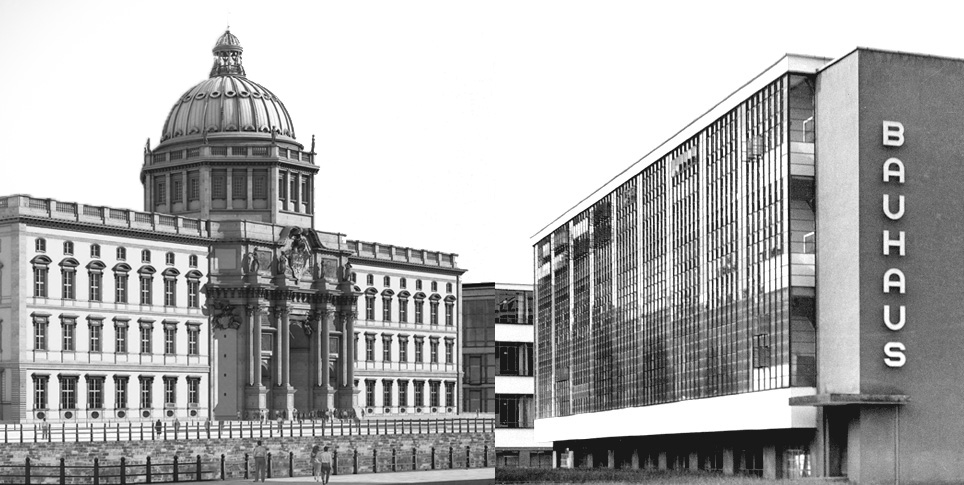
In 2013, the Director of the Stiftung Bauhaus Dessau (Bauhaus Dessau Foundation) at that time, Philipp Oswalt, and his Deputy Regina Bittner met Martin Heller, Head of the Humboldt Lab Dahlem, which just had started back then to discuss this experimental format. From 2012 to 2015, the Humboldt Lab Dahlem provided impulses for the exhibition planning of the Ethnologisches Museum and the Museum für Asiatische Kunst, Staatliche Museen zu Berlin, for the future Humboldt Forum.
Philipp Oswalt: The Humboldt Forum in the reconstructed Berliner Schloss (Berlin Palace) is scheduled to open in 2019 — the year in which the Bauhaus celebrates its 100th anniversary: How modern is the Humboldt Forum?
Martin Heller: Not very. To my mind the Humboldt Forum articulates more of a post-modern way of thinking — and I mean that in a positive way! It has little to do with purism, doctrines of salvation and missionary ideas of world improvement, and therefore little to do with the things on which my ambivalent feelings about the Bauhaus especially are based. The Humboldt Forum in Berlin-Mitte must deal with ambivalence and make tensions productive in a world that wasn’t anticipating this new institution. This humility is what distinguishes many of those who work for the Humboldt Forum from the self-assuredness and self-righteousness of the Bauhauslers.
Oswalt: But aside from the heroic impulses of modernism, we have the everyday cultures of the 20th century — a vernacular modernism. Will this have a place in the Humboldt Forum?
Zitat
"Don’t we need a new museum concept?" Regina Bittner
Heller: Naturally museum collections, in all their historic diversity, make up part of modernism. These collections and the obligation to do something pioneering with them unleashes a vast amount of energy in all those involved, also in the case of the Humboldt Forum. At the same time, a piece of modern history has to be negotiated. Take Fritz Bornemann’s Mesoamerican room in Dahlem, which has a friendly, sensitive and playful approach to the exhibited objects that I find endearing. If it wants to be effective, the Humboldt Forum must also convey this kind of devotion. But that alone is not enough.
This brings me to postmodernism, its freedom of thought, its attitude of ‘anything goes’, which does not mean arbitrariness, but a commitment to ongoing uncertainty and inquiry. This is uncharted territory, and reference examples for a place like the Humboldt Forum are few and far between.
Regina Bittner: The idea of a world or universal museum plays a significant role in the debate about the Humboldt Forum. This also harbours a reference to Humboldt’s ideals. But by now the underlying model for the organisation of knowledge, which followed the classifications and order systems of Western knowledge, is being heavily criticised. The Agora that you are planning should help clear up this dilemma; but doesn’t it need a new museum concept?
Zitat
„There are other museums that would be just as worthy of discussion, but which nobody dares to tackle — for example those with high-end architecture and art that is invariably the same and universally palatable, designed just to meet a quota.“ Martin Heller
Heller: The museum concept already has more than enough interpretations. Like every museum, the Ethologisches Museum (Ethnological Museum) and the Musuem für Asiatische Kunst (Museum of Asian Art) also aim to impart primary knowledge and to do so through their objects. To this end they are however seeking a new approach to their objects, which is based in the present. Traditional classification systems have long since lost their relevance in this respect. We must work with differences and departures, rather than aspire to universal homogeneity. Moreover, the Berliner Schloss should become a place, which is so much more than a museum.
Bittner: Ethnological museums are particularly contaminated in that their collections were built up in the colonial context. In the meantime, European museums of this ilk are attempting to find new concepts for their exhibitions. Musée de quai Branly in Paris, for instance, is now being accused of aestheticising the artefacts of non-European cultures in order to avoid the question of exploitation and plundering, which is inherent to them. This no doubt applies equally to the Dahlem collection. To what extent do postcolonial debates affect your considerations, and are you also facing demands to return certain objects?
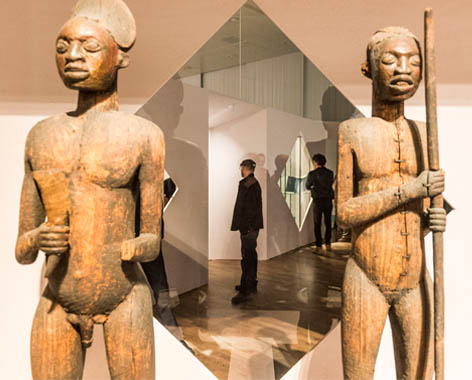
Oswalt: But surely you cannot put a case for the de-politicisation of the situation. The choice of objects is inextricably linked with the way in which they became the property of the museum. Attempts are being made to formulate a positive utopia of what is Prussian, and to simply edit out important imperial and colonial dimensions. Further, there is no cultural encounter on an equal footing, because only the non-European ethnological collections will be exhibited at the Humboldt Forum, while the European objects will stay in Dahlem.
Heller: You’re taking it the wrong way. I didn’t say that the collection’s history or the associated cultural and political implications are of no consequence – there’s no question of ignoring anything, and no question of sackcloth and ashes either. What we should be looking at is the status and practicability of such concerns. To confront the public with the history of the collection at every turn is neither reasonable nor affordable. Instead, we have to find the right forms and formats to interpret this historic material, and to communicate it. Regarding the European question: In a project at the Humboldt Lab Dahlem we are currently looking at what a specific inclusion of European objects in the Humboldt Forum might achieve. Unlike you, we don’t proceed from certainties and pathos formulas, but from possibilities.
Oswalt: The point of my question was that transcultural exchange processes have existed for thousands of years and have had a decisive effect on the cultures of Europe and other continents. It should be possible to experience especially these relationships and exchanges in a Humboldt Forum.
Heller: Of course, and many of these processes have nothing at all to do with Europe in the first place. But all the more or – in your case – less well meant external demands about what should be seen or experienced in the Humboldt Forum don’t bring us any further. We must take an interest in the visualisation of content: on the basis that the museum’s objects are treated with respect and can develop their appeal. This is a huge challenge. Purely political, ideological or scientific propriety is both fainthearted and dull. We all go to museums and exhibitions in order to gain valid and personally valuable experiences — through images and other artefacts and the way in which they are presented. After all, museums never show us the world; they just show us objects that have something to do with it. Furthermore, museums are also being subjected to fundamental changes brought about by digitalisation and the Internet in particular. Over the passage of time, the desire for education is being satisfied less and less by museums. We have to respond to this.
The Humboldt Lab Dahlem
The Humboldt Lab Dahlem (2012-2015) provided impulses for the exhibition planning of the Ethnologisches Museum and the Museum für Asiatische Kunst, Staatliche Museen zu Berlin, for the future Humboldt-Forum. This program, by the Kulturstiftung des Bundes and the Stiftung Preußischer Kulturbesitz, which was realized with the support of numerous participants, comprised around 30 projects, in which visitors could participate in seven "Probebühnen" at the Dahlem Museums.
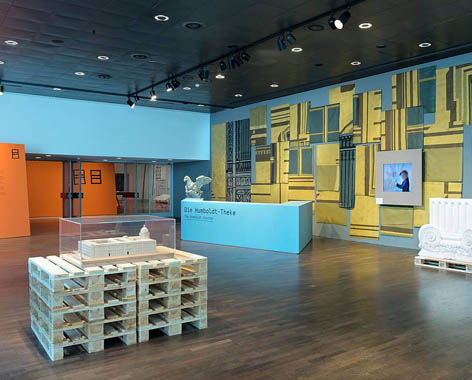
Zitat
„You are therefore presenting an image to the world. But from what perspective? Is it a universal one, or a German one?“ Philipp Oswalt
Oswalt: But is it really about one’s own role? In the brochure of the Berlin Palace Humboldt Forum Foundation of 2011, under the heading “The cultural heritage of Prussia opens up new perspectives for intercultural dialogue”, it says: “If people from Asia or the descendants of indigenous Indian or African societies one day visit the Humboldt Forum with the same feeling that we Europeans have when we visit the Museumsinsel (Museum island) in Berlin, the Louvre or the Prado, then the Humboldt Forum will have achieved one of its main objectives.” This articulates the assumption that we can define the cultures of others on their behalf with the collections that we don’t want to give back to them. To my mind, that’s a pretty odd idea.
Heller: To mine, your insinuation is clumsy, and perhaps you should get your information at first hand from our colleagues in Dahlem from time to time, so that you know which diverse contacts there are in place with indigenous societies, which concerns are associated with these on both sides, and how, in an excellent international Advisory Board, different perspectives and opinions on the Humboldt Forum are being developed and exchanged, which transcend wholesale judgements.
And if you were to genuinely believe that the Dahlem Museums should return their collections to where they came from, then I don’t understand why you would want to talk to me in the first place. But such provocation is beneath us, so let’s move on: If I had to reconcile the overview of the activities and research approaches presented on the Bauhaus Dessau Foundation’s website with the ideological rigour of your historic legacy, I would have problems too – but I have to concede your right to professional development and emancipation.
Zitat
„All the more or – in your case – less well meant external demands about what should be seen or experienced in the Humboldt Forum don’t bring us any further. We must take an interest in the visualisation of content.“ Martin Heller
Bittner: The museum as we know it is a child of the 19th century. It was a privileged locus of knowledge that could dictate the modus of the (often national) historiography. In the 21st century, this has completely changed. History becomes the material of multiple narratives and formats; at the same time, the collected objects are also increasingly complex and their sheer materiality limits this multiple perspective. Even so, has the museum lost its dominance?
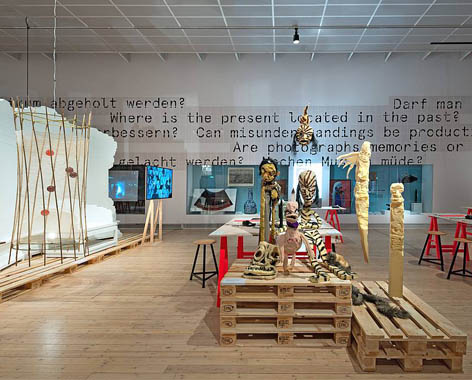
Heller: I agree – with the one difference that the museums of today are exceptionally popular and successful, not despite the fact they are not politically dominant institutions, but precisely because of it. Now: Have they ever been that? I am not as sure of that as you are. And finally: The Humboldt Forum is an institution that gains its singularity from the cooperation of diverse partners and from the interaction of the museum exhibitions with a programme of events that is not yet (six years before the opening!) set out in detail, but which is certainly committed to and motivated by contemporary concerns. This interplay however targets common determining factors: the future public, an overall picture of contemporaneity, and the attempt to not only permit, but also consciously seek, multiple perspectives.
Oswalt: The Prussian positioning of the Stadtschloss became possible because of its association with the non-European programme. The content was initially irrelevant: legitimacy for the national positioning was required. The relationship to non-European cultures was instrumental to this and therefore not especially reflected on. You now face the difficult task of turning this situation to the positive – which is not impossible. Finally, could you describe in more detail what this entails for the Humbold Lab?
Heller: Of course. Not least because our communication problems also stem from the question of where the Lab’s work starts: With the problems of different socialisations and the limitations of the language barriers between – broadly speaking – science and design.
The Humboldt Lab Dahlem is an instrument that tries to overcome these barriers through experimental practice projects, and I am eternally grateful to the Kulturstiftung des Bundes for funding this work and taking an interest in it. The Lab’s projects, which we regularly present also for public discussion, take seriously the challenges of all the innovations that the Humboldt-Forum is presented with on the level of museum representation. This means that, with the assistance of numerous experts over four years, we can develop timely and application-orientated solutions for specific problems, which benefit the planning process of the Humboldt Forum.
This is the adventure of inquiry that I mentioned earlier, which must also be allowed to sometimes take a step in the wrong direction. This inquiry means that we are far more honest and further along the way than all those who still attack the Humboldt Forum because they imagine that the architecture of the building betrays their ideals, and are blind to the opportunities that the creation of this new institution presents.
This text was published first in erschien zuerst in der „bauhaus“ magazine, issue #5: „Tropen/Tropics“, published by the Stiftung Bauhaus Dessauin June 2013


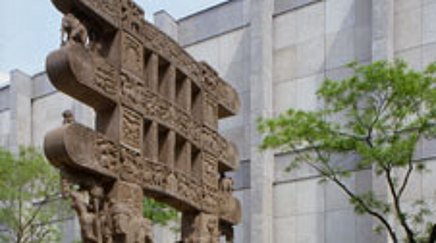
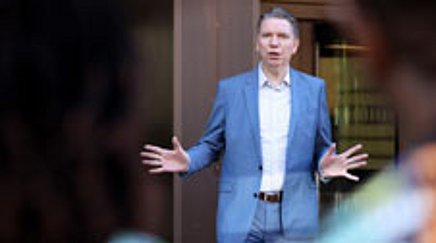
![[Translate to English:] [Translate to English:]](/fileadmin/_processed_/b/2/csm_Int_Koop_Scholz_Ausstellungsansicht1_dst_8c874a50f1.jpg)

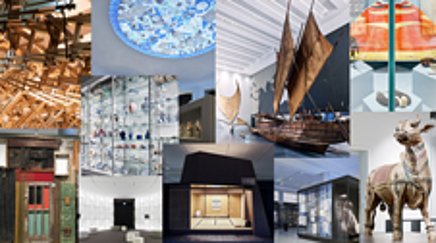
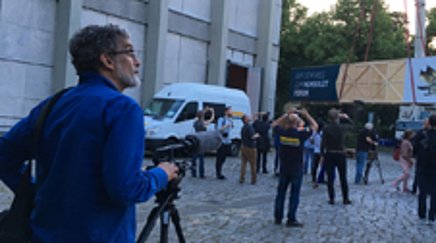
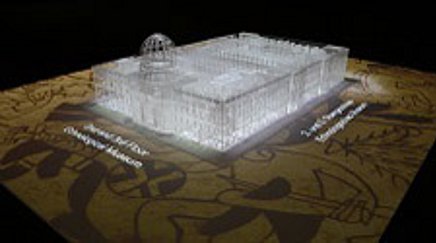
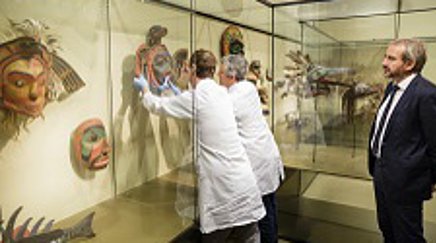
![[Translate to English:] Besucher bei der Ausstellung Living Inside the Story / Humboldt Lab Tanzania (Februar 2017). Besucher bei der Ausstellung Living Inside the Story / Humboldt Lab Tanzania (Februar 2017).](/fileadmin/_processed_/d/6/csm_Ausstellung-Lab-Tanzania-Dar-es-Salaam_ds1_25333185ee.jpg)
